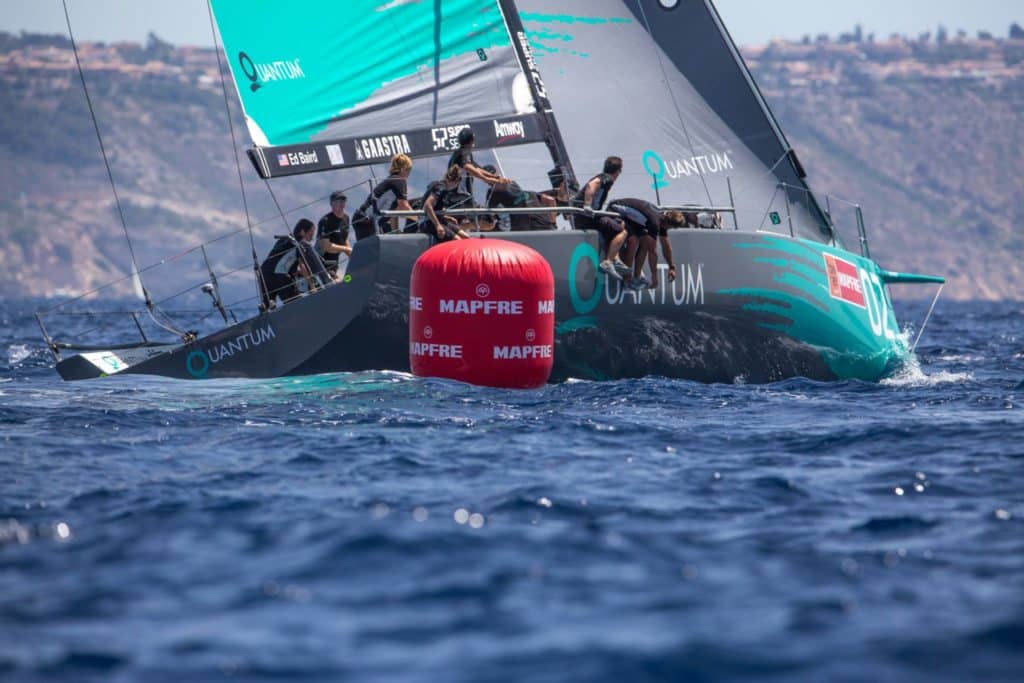
Quantum Racing Leeward Mark
A clean exit around the leeward mark requires a few consistent parts: a timely douse, good sail trim, proper rudder load, and a smooth, consistent rate of turn. In any competitive fleet a good rounding can be a make or break part of the race.
Timely douse Good timing on the spinnaker douse is critical. As I continue to learn time and again, early is better then late. The biggest criticism of my own game would my habit of pushing too far into the mark, at the risk of losing because of an untidy douse, which is greater than the potential gain. As soon as the boat is on the edge of the three-length zone, get rid of the spinnaker. In windier conditions make it happen even earlier, prioritizing a clean foredeck and weight on the rail as the boat turns onto the breeze.
Sail trim This is where a bad turn gets amplified. A flapping mainsail kills the momentum of the turn and keeps the front of the boat loaded more than the rudder. The ideal turn is when the mainsail is trimmed slightly harder, or ahead of the turn, keeping enough (but not too much load) on the rudder, helping the boat onto an upwind angle. The jib trim should be just behind the mainsail, but if the trimmer errs, it’s better to have the sail slightly under trimmed than over trimmed. This will again make it easier for the helmsman to hit the upwind angle.
Rudder load This is completely dependent on the conditions. The sail trim should be enough to encourage the boat onto the upwind angle, but not so much so that the boat loses control and spins out while rounding the mark. In an ideal world, the load is enough that the helmsman can turn upwind with control and land just inside of the upwind angle. From there they can press slightly on the jib to build speed, without giving up precious gauge, to maintain a tight lane. Rudder load will dictate this, so when in doubt, slightly more load is better then less.
The turn A good turn starts wide and passes as close to the mark as possible on a close-hauled course. That’s easy to say, and yet in the heat of the moment it’s often harder to execute. My recommendation is for the helmsman to have a good line of sight to the mark, good balance on the helm (meaning you can control the rate of turn and the boat is not controlling you), and practice different approach angles, always working toward passing the mark as close to upwind as possible. Again, the priority is to be on the breeze or slightly thin on the jib to hold the lane out of the bottom.









